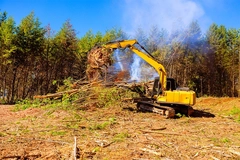
- Industry news
Industry news
- Category news
Category news
- Reports
- Key trends
- Multimedia
- Journal
- Events
- Suppliers
- Home
- Industry news
Industry news
- Category news
Category news
- Reports
- Key trends
- Multimedia
- Events
- Suppliers
BASF Plant Science Identifies Case of Low Level Comingling in Amflora Fields in Sweden

The level of comingling is less than 0.01%, which translates to 47 Amadea plants among approximately 680,000 Amlora plants. BASF Plant Science removed all Amadea plants from the fields. The subsequent steps are currently under discussion with the relevant authorities including the European Commission.

Sep 7 2010 --- BASF Plant Science identified extremely small quantities of Amadea potatoes in Amflora fields planted in Northern Sweden during the course of the regular in-house quality controls. The Swedish competent authority was informed at the end of August after BASF Plant Science employees identified Amadea plants in Amflora fields during regular control visits. The fields in question have been planted for seed multiplication of the genetically modified starch potato Amflora. Amadea is BASF’s second starch potato variety that was submitted last week for regulatory approval in the EU by BASF Plant Science.
The level of comingling is less than 0.01%, which translates to 47 Amadea plants among approximately 680,000 Amlora plants. BASF Plant Science removed all Amadea plants from the fields. The subsequent steps are currently under discussion with the relevant authorities including the European Commission.
The cause of the low level comingling of Amadea is currently being thoroughly analyzed. The comingling was identified because Amadea flowers are white, while Amflora only develops a few violet flowers. All Amadea plants have been removed during the growth period and did not enter the commercial starch production. Amflora fields in Germany and the Czech Republic were also monitored in the course of the regular stewardship controls. No Amadea potatoes were identified in these fields.
Amflora and Amadea are two genetically modified potato varieties that produce pure amylopectin starch. Conventional potatoes produce a mixture of amylopectin and amylose. In many potato starch applications, for example in the paper, adhesive and food industries, only amylopectin is needed, and separating the two starch components is uneconomical. Amflora and Amadea produce pure amylopectin starch and thus help to save resources, energy as well as costs.
Moreover, paper coated with amylopectin starch has a higher gloss, and the addition of amylopectin starch to concrete and adhesives can be processed for a longer period of time.
In the case of Amflora, BASF Plant Science and its partners in the starch industry decided to focus on industrial applications.
Due to the demand for amylopectin starch in the food industry, BASF Plant Science will be working with its partners to evaluate potential applications for its Amadea potato in this area.










